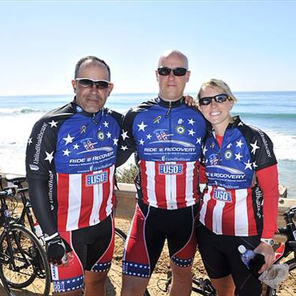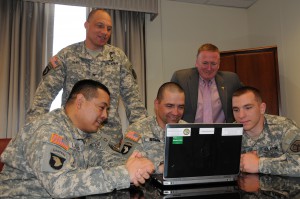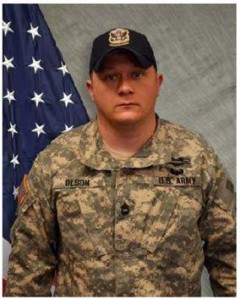
AW2 long-serving staff member Charles Williams, pictured in the back, and his family attended an event in Wash., D.C. with former AW2 Director COL Greg Gadson.
A decade ago, a small but mighty organization sprouted up to address the needs of severely wounded, ill and injured Soldiers. The Army created the Disabled Soldier Support System (DS3) in 2004, a dedicated program providing personalized support to recovering Soldiers. A year and a half later, DS3 changed its name to the U.S. Army Wounded Warrior Program (AW2), which has since impacted nearly 20,000 severely wounded, ill and injured Soldiers and Veterans. This year marks AW2’s 10th Anniversary and provides an opportunity to take a step back and appreciate how the program has evolved.
Looking back inspires a hopeful future, and long-serving AW2 staff member HR Specialist Charles Williams remains dedicated to helping severely wounded, ill and injured Soldiers, Veterans, their Families and Caregivers.
“When I came to work the program had just started,” explained Williams, who has served on
staff since the program’s inception in 2004. “It was me, a colonel and a lieutenant colonel—that was it. We had to grow the program.”
Williams, a retired service member who worked for a time as an Army recruiter, spent a lot of his early days at AW2 interacting with wounded Soldiers. “They had a warrior spirit,” Williams recalled. “I would draw off of their strength. I could feel the energy and the love and the resiliency that they had. They are truly heroes.”
Though he enjoyed working directly with the Soldiers, Williams felt his experience would be more valuable in human resources. As the program evolved it was able to create more departments and take on more staff. “Now we have people with the appropriate skill sets to do what’s needed to take care of Soldiers and Families effectively,” Williams said of AW2’s growth. AW2 now has a presence in Warrior Transition Units (WTU) at major military treatment facilities around the world, providing Soldiers with personalized care as they recover and rehabilitate.
From the start, AW2 Advocates played an integral role in a Soldier or Veteran’s recovery process. They are on-site at WTUs and VA locations, and collaborate with WTU cadre to educate each Soldier on available benefits and resources and help the individual create goals. William Years came on board in September 2004 as AW2’s first Advocate, back then called “Soldier Family Management Specialists,” and shared how the program grew to meet the needs of wounded, ill and injured Soldiers.
“Soldiers and Families were confused as to who was a nonprofit and who was an official Army program,” said Years. “We’ve got the ability now to coordinate services to assist them,” he added, “and coordination between AW2 and the VA has smoothed out.”
On top of better coordination between services and organizations, recovering Soldiers and Veterans now have more education and employment opportunities. AW2 Career Coordinator Roberta Berry, who joined the program in August 2005, said “back then, we were all learning together how to best support the wounded, ill and injured. AW2 Advocates today have the Advocate Support Branch, which is a team of subject matter experts who specialize in finance, VA resources, education and more.”
AW2 long-serving staff agree that the program continues to evolve to meet the needs of severely wounded, ill and injured Soldiers and Veterans. “It’s good to see where we were compared to where we are now,” said Years. “We’ve made great strides. You’ve got people who actually want to do the work because they have a passion to assist people and see things through,” he said of AW2 staff members.
From 16 Advocates to a legion of more than 200, from a team of trailblazers to strategically placed staff in Warrior Transition Units (WTUs) and VA locations across the country, AW2 has continued to grow.
“We need to be able to tell the world that if your child goes into the Army and they sustain injuries, there is a program here that is going to help them all the way through,” said Williams. “To continue to talk about AW2 and what we can do for Soldiers, Veterans, Families and Caregivers—it’s a conversation that should never stop.”
Editors Note: 2014 marks the 10th anniversary of the U.S. Army Wounded Warrior Program (AW2). Read more about AW2′s decade of impact with more than 19,000 severely wounded, ill, and injured Soldiers, Veterans, their Families and Caregivers at http://www.WTC.army.mil/announcements/aw2_10th_anniversary.html.












